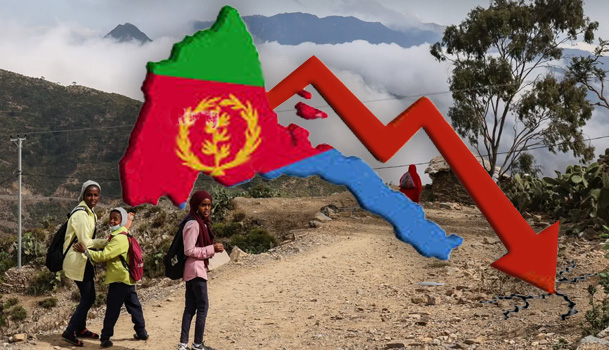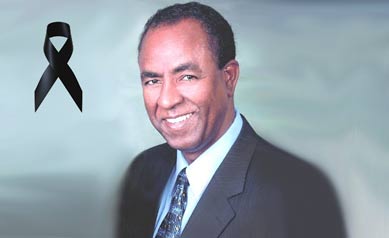The Debt-Free Illusion: Rethinking Eritrea’s Economic Self-Reliance

One of the most enduring pillars of Eritrea’s post-independence identity has been its proclaimed self-reliance. In a continent where many nations are entangled in foreign debt and donor dependency, Eritrea has positioned itself, and has been portrayed by its supporters, as proudly exceptional. It is often said that the country owes nothing to anyone, that it has resisted the financial grip of the International Monetary Fund (IMF), the World Bank, and other global lenders. In the eyes of many citizens, especially within the diaspora, this resistance to borrowing has become synonymous with national dignity and sovereignty.
But what if this narrative, repeated over the years as a matter of national pride, is misleading? What if the claim that Eritrea is debt-free does not hold up to basic scrutiny? What if, in fact, Eritrea is among the most indebted countries on the African continent?
This essay aims to challenge the myth of debt-free self-reliance by presenting a clear, evidence-based picture of Eritrea’s debt profile. It draws on publicly available data from credible institutions like the IMF and the World Bank and explains the meaning of government debt in a way that’s accessible to the general public. Because to understand where we are, and where we might be going, we must begin by being honest about what’s hidden in plain sight.
At its core, government debt is not a mysterious thing. Countries borrow money to fund operations, especially when tax revenue and national income fall short of covering costs. These loans can come from two broad sources: external lenders and domestic institutions.
External debt refers to loans taken from foreign governments, international financial institutions, or global banks. These are usually issued in hard currencies like U.S. dollars and come with interest rates and repayment schedules. Domestic debt, on the other hand, is borrowed from within the country, often through national banks, bonds, or financial institutions. In Eritrea’s case, where banks are state-owned and there is no functioning private financial market, most domestic borrowing happens through state-run institutions like the Commercial Bank of Eritrea.
To measure whether a country’s borrowing is sustainable, economists use something called the debt-to-GDP ratio. This figure compares the total amount a country owes to the total value of all goods and services it produces annually, its Gross Domestic Product (GDP). A debt-to-GDP ratio of 100 percent means the country owes as much as it produces in a year. Anything higher suggests growing pressure. Lower ratios are generally safer, allowing countries more room to maneuver economically.
This brings us to Eritrea.
According to the IMF Data Mapper, the most recent available figure for Eritrea’s general government gross debt stands at a staggering 260 percent of GDP, more than two-and-a-half times the size of the entire economy. This figure, from 2019, is not speculative. It is official, sourced from the IMF’s global monitoring system, and it places Eritrea among the most heavily indebted countries in the world. This alone should dismantle the claim that the nation is debt-free.
And yet, there is more.
Contrary to popular belief, Eritrea carries a sizable amount of external debt, that is, debt owed to entities outside its borders. According to the World Bank’s International Debt Statistics, Eritrea’s external debt in 2023 totaled over $725 million USD. This includes long-term loans, short-term borrowing, and obligations to the IMF through Special Drawing Rights (SDR). This level of foreign debt is significant for a country with a small and fragile economy. It also contradicts the idea that Eritrea has stood entirely apart from global lending systems.
In addition to its external liabilities, about 80 percent of Eritrea’s total debt is domestic, owed primarily to the country’s own banking system. But this raises an important question: How do we know this, given that the Eritrean government rarely publishes transparent financial reports?
The answer lies in methodology. Institutions like the World Bank and IMF use residual estimation to calculate domestic debt in closed or secretive economies. In simple terms, they take the known total debt (for example, 260 percent of GDP) and subtract the verified amount of external debt (around $725 million). The remainder is then understood to be borrowed internally. While this method is not precise to the last dollar, it is standard practice in international finance and it offers a credible way to estimate what governments try to conceal.
So what does it actually mean when 80 percent of Eritrea’s massive debt burden comes from inside the country?
To begin with, it means that the government is likely using citizens’ own savings, held in state-run banks, to fund its operations. That might sound like business as usual, but in Eritrea’s case, it’s a problem for several reasons. First, there is no meaningful interest rate paid to savers. If the government uses your money, it does so without compensating you. Over time, your savings lose value. Second, since the banks are lending heavily to the government, there is little or no capital left for private businesses to borrow and grow. This suppresses entrepreneurship, job creation, and innovation. Third, unchecked borrowing often leads to inflation, a silent tax on ordinary people, where prices rise but wages stay flat.
The bigger danger, however, is long-term. What happens when the current government collapses, or when a political transition finally arrives?
If 80 percent of a country’s massive public debt is owed domestically, it means future governments will be inheriting a bankrupt banking system. There will be no clear records of who is owed what. The public trust in savings and banking could collapse overnight. Citizens may find that the money they thought was safely stored has already been spent. Credit will vanish. Foreign investors will hesitate. And the road to recovery will be steep and painful.
This is the quiet crisis buried under the illusion of self-reliance.
And that leads to a more difficult, but necessary, conversation: what will this debt burden mean in a post-dictatorship Eritrea?
The next government, whether transitional or permanent, will face an enormous challenge. It will not only need to reform political institutions, but also reconstruct an entire economic infrastructure hollowed out by decades of opaque borrowing and unsustainable financial management. Any attempt to build a functioning, transparent economy will first have to reckon with a banking system whose liquidity has been drained, whose ledgers may be incomplete, and whose legitimacy will be questioned by its own citizens.
How will a new administration convince Eritreans to save again, to trust the banks again, and to invest or open businesses when the very mechanisms of financial life were long manipulated for political survival? How will it attract international investment when the state has no reliable accounting of its own liabilities? These are not theoretical questions. They are the concrete consequences of today’s hidden debt, consequences that will shape Eritrea’s economic trajectory for decades.
A future government may find itself forced to accept emergency assistance, not out of weakness, but out of necessity. Not because Eritrea failed morally, but because it was financially sabotaged under the guise of self-reliance.
To fully understand Eritrea’s economic position, it might help to compare it with countries within Africa. Ethiopia, often seen as economically dependent due to its large IMF loans, actually has a much healthier debt-to-GDP ratio, around 39 percent. While Ethiopia owes more in absolute terms, it has structured its debt, maintains negotiations with international institutions, and enjoys some level of policy flexibility. Gabon and The Gambia, two smaller African economies, have ratios of 80 percent and 60 percent, respectively. Even the regional average for Sub-Saharan Africa is only about 64 percent. Eritrea, at 260 percent, is not the exception. It is the outlier, and not in a way that suggests stability or strength.
However, the myth of Eritrean self-reliance, economically speaking, has served a political function. It has helped justify authoritarianism, isolation, and indefinite national service. It has allowed those in power to claim moral superiority over African governments that depend on loans or aid. But numbers don’t lie. The truth is that Eritrea is heavily indebted, both to outsiders and, more dangerously, to its own people.
Being honest about this reality is not about blaming the country. It’s about maturing as a society. It’s about preparing for what comes next.
If Eritreans want to rebuild the economy, create sustainable institutions, and open space for real development, we need to start with facts, not slogans. A healthy economy is not one that hides its debt, but one that manages it transparently. A free people are not those who are told they are debt-free, but those who are allowed to see the numbers and ask where their money went.
Eritrea’s future will require rebuilding. Financially, institutionally, and morally. And that rebuilding begins with truth and with the courage to face what has been hidden for too long.
Prometheus Woldai, May 2025
Sources Consulted
International Monetary Fund (2019). General Government Gross Debt (% of GDP) – Eritrea. Retrieved from: https://www.imf.org/external/datamapper/GGXWDG_NGDP@GDD/Erit
World Bank (2023). International Debt Statistics – Eritrea. Retrieved from:
International Monetary Fund (2023). World Economic Outlook Database – October 2023. Retrieved from:
Bertelsmann Stiftung (2022). BTI 2022 Country Report: Eritrea. Retrieved from:


Awate Forum